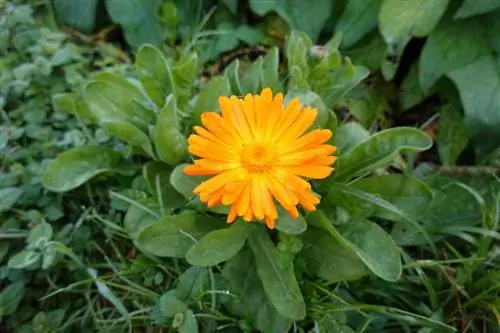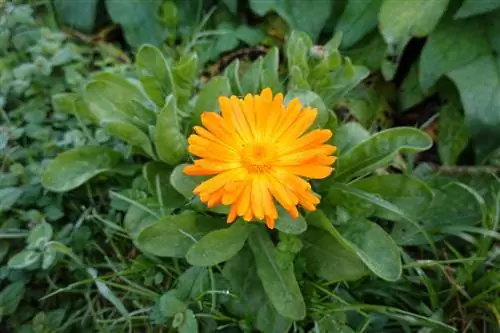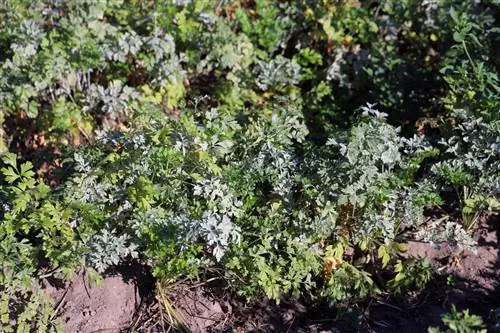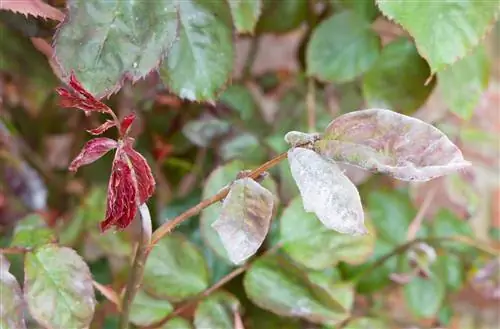- Author admin [email protected].
- Public 2023-12-16 16:46.
- Last modified 2025-01-23 11:22.
Marigold, botanically also known as calendula, has a wide range of uses in our gardens, whether as a decorative, permanent bloomer, a medicinal plant or as protection against nematodes. Unfortunately, the plants are often attacked by fungi such as powdery mildew. We'll explain what you need to pay attention to.

How do I recognize powdery mildew on marigolds?
Marigolds often have awhite, mealy coating on the upper side of the leaves. This is caused by infestation with powdery mildew. Downy mildew can be recognized by brownish spots on the top of the leaves. A grayish fungal lawn forms on the underside of the leaf.
How do I combat powdery mildew on marigolds?
Before you treat your marigolds against powdery mildew, you should cut off theaffected plant parts A mixture of milk and water in a ratio of 1:2 has proven particularly effective as a home remedy. Only use whole milk or whey for this. A mixture of baking powder, rapeseed oil and a drop of dishwashing liquid also works against mildew fungi. Both products are suitable for spraying the affected plants. You should carry out this activity several times a week and after every rain.
What helps against downy mildew on marigolds
If you are infected with downy mildew, theaffected plant parts should be removed as quickly as possible. A spray solution made from garlic broth and water is suitable for biological control of mildew fungi. This must be applied several times a week and after every rain. Downy mildew is encouraged by a lot of rain and moisture, so it occurs more frequently in autumn. Since marigolds are annuals, it is best to dispose of the infected plants.
How can I prevent mildew?
Optimal conditions at the location help prevent mildew infestation. Strong plants are less likely to be affected. Also pay attention to the correct distance between the plants. This allows the leaves to dry more quickly. At the same time, more nutrients are available to the individual marigolds. Nevertheless, mildew infestation cannot be completely avoided. As a preventative measure, you can water the plants with field horsetail tea. Do not fertilize your marigolds. For those who eat poorly, nitrogen fertilizer leads to soft leaves.
Tip
Do not mix milk and baking soda
The effect of milk or baking soda is to change the pH value. Lactic acid creates an acidic environment, while baking soda increases the pH. Mildew fungi cannot tolerate these changes and die. But if you mix milk and baking soda together, the pH will balance out again. The mixture will then not be effective against mildew fungi.






